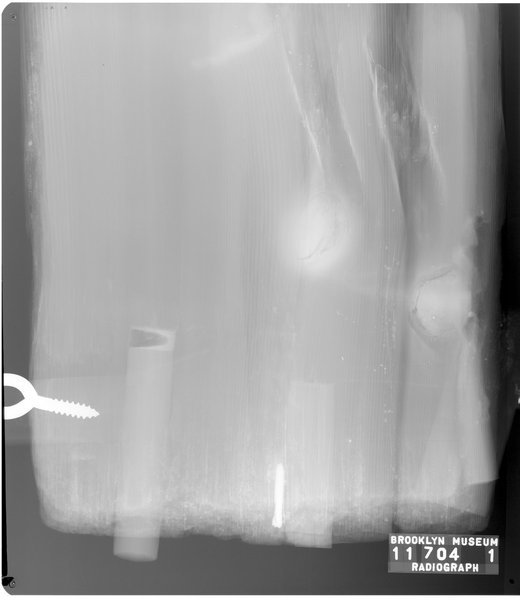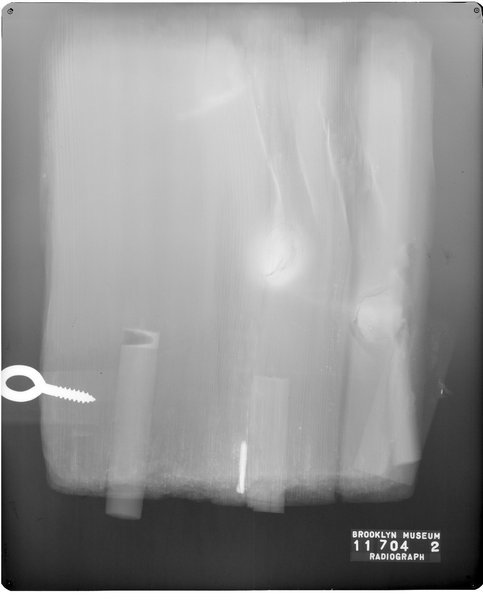Totem Pole for the "House which is a Trail" Item Number: 11.704a-b from the Brooklyn Museum




Description
Cedar wood, unpainted. Rear, hollow concavity. Original pole cut in half. Top half (a): Design - plain, tapering cylinder at top, two main figures and part of a third. Upper figure - raven with two subsidiary motifs (crescent across chest and upper wings, a small head and hands peering over the crescent). Raven beak, separate piece of wood. Lower figure - top half of a humanoid with large head above upturned flukes which are grasped in its hands. Fragment of third figure - upturned flukes (whale-like, cut off at tail). Bottom half (b): Design - upside-down humanoid, large animal (bear?) holding a small creature (frog?) to its mouth. CONDITION: Pole cut in two, evidently before arrival at the Museum.
Credit Line
Museum Expedition 1911, Purchased with funds given by Robert B. Woodward
Label
This pole stood in front of the so-called "House on Which Is a Trail" in the Haida village of Kayang. The crest bird on top depicts the "Raven Stealing the Sun," symbolizing how, in Haida mythology, the raven brought light and enlightenment to humankind. The figure at the bottom holding dorsal fins may represent a character from a Haida legend. According to the story, a person disappears into the blowhole of a mythological bear called a sea grizzly and then passes through a whirlpool to the bottom of the ocean.
Item History
- Made between 1800 and 1899
What
- Name
- Totem Pole for the "House which is a Trail"
- Identification Number
- 11.704a-b
- Type of Item
- totem pole and house
- Material
- cedar wood
- Measurements
- “(a) section: 270 x 39 1/2 x 51 in., 1000 lb. (685.8 x 100.3 x 129.5 cm, 453.6kg) (b) section: 163 x 44 in. (414 x 111.8 cm) Storage (Crate for (a) section with detached beak made 2009 Surroundart): 51 x 49 x 278 in. (129.5 x 124.5 x 706.1 cm)” ?
Who
- Culture
- Haida
Where
- Holding Institution
- Brooklyn Museum
When
- Creation Date
- between 1800 and 1899
Other
- Classification
- Architectural Element